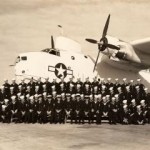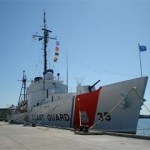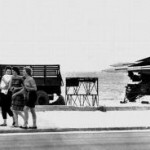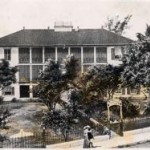Military
Key West Armory
The Armory was in such an advanced state of deterioration by 1969 that the State granted the City permission for it’s demolition. Joseph Allen and State Representative William Roberts fought to save the building and were instrumental in forming the Historic Preservation Board. Preservationists James Shields, Edward & Joan Knight, Larry Nettler, Mary Lee Graham and Norman Artman are also credited with preserving the structure.
Trumbo Naval Air Station
The Navy broke ground on land originally created for Flagler’s railroad on July 13, 1917. A crucial strategic and educational facility through both World Wars, Trumbo Point has proven its worth time and again. Geographically ideal for seaplanes, Trumbo was used to train pilots and as a base for seaplanes used for submarine patrol throughout the Caribbean and Pacific. The seaplane squadrons deployed from here during the second World War escorted supply convoys and ultimately helped win the war.
USCGC Ingham
This 327 foot long, 6200 hp cutter held 300 men and partook in World War II, Vietnam, and the Korean War. The Ingham received a record 35 awards and was the most decorated vessel of its time. During its service on December 15, 1942, the Ingham engaged and sank German U-boat U-626. In 1980 the Ingham served as one of 1,700 ships that helped hundreds of Cuban immigrants reach the U.S. during the Mariel Boatlift.
Cuban Missile Crisis
During the fall of 1962, United States intelligence sources confirmed Soviet construction of nuclear missile sites in Cuba. This provocation, coupled with the strains of the Cold War was a direct nuclear threat to the United States. Fearing invasion of the mainland, Key West was transformed into an armed camp. President Kennedy ordered a naval quarantine of Cuba blockading all Soviet ships. After two weeks of tense negotiations the Soviet Union pulled all nuclear weapons from Cuba, and nuclear war was avoided.
Marine Hospital
At the request of U.S. Navy Commodore David Porter, construction began for a Marine Hospital in Key West in late 1844. The new hospital was completed in less than a year and opened on August 2, 1845. The hospital was equipped with sixty beds. For ninety years the hospital served both civilian and military personnel during the Civil War, Spanish American War, both World Wars, and the yellow fever and influenza epidemics. It closed as a hospital January 1, 1943.




